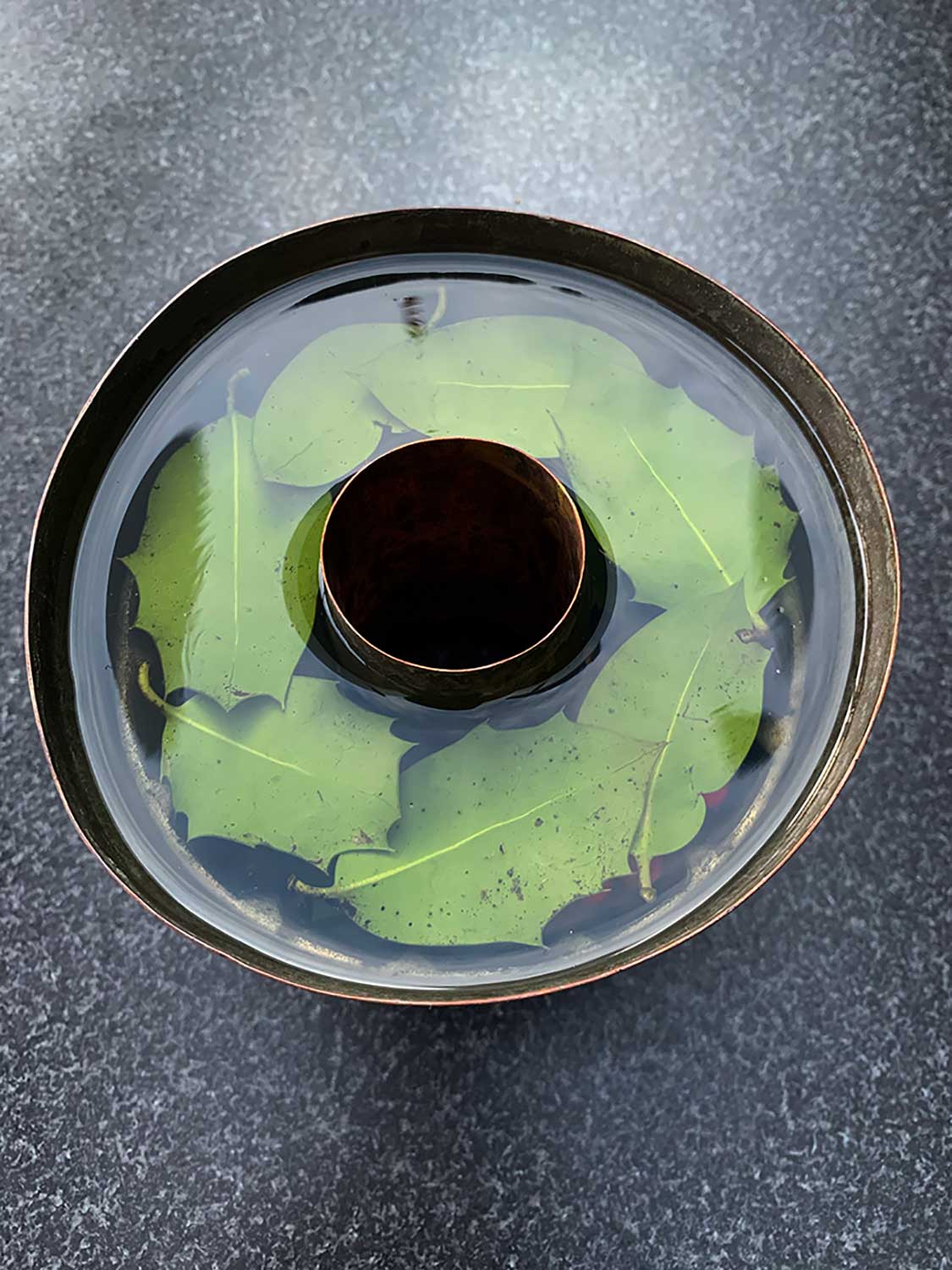Christmas Jelly
The Victorians used jelly to create non edible table displays at their lavish banquets - Christmas is the perfect time to set something suitably festive for the table.
I’ve used a 19th century antique copper penny top mould for this circular display. The design on the top of the mould consists of overlapping circles which resemble old copper pennies, hence the name. The mould is English and dates from c. 1870. It is made from heavy gauge copper and is stamped with the pattern number 255.
For a modern alternative use a stainless steel mixing bowl, readily available, and easy to turn out by flashing in hot water. I have also used Bundt cake tins in the past for centrepiece jellies.
Once finished display the jelly on a cake stand to give it extra presence.
INGREDIENTS
Gelatine Leaves
500ml Water
Holly Leaves & Berries
METHOD
- I decided the best way to present the holly was to separate the leaves and the berries and layer them in a clear jelly.
- Measure the volume of your mould and make the equivalent quantity of jelly following the rule 6 leaves of gelatine to 500ml of water.
- First I put a layer of berries in a shallow layer of jelly and set in the fridge.
- Once firm add a larger layer of jelly to create space between the berries and the leaves layer and pop it back in the fridge.
- Lay the leaves in concentric pattern on the set layer and add a tiny amount of jelly to hold the leaves in place, set again.
- Once set add another deeper layer of jelly to create space. Then repeat with a berry layer, space, leaf layer and finally fill to the top before leaving in the fridge overnight for the final set.



